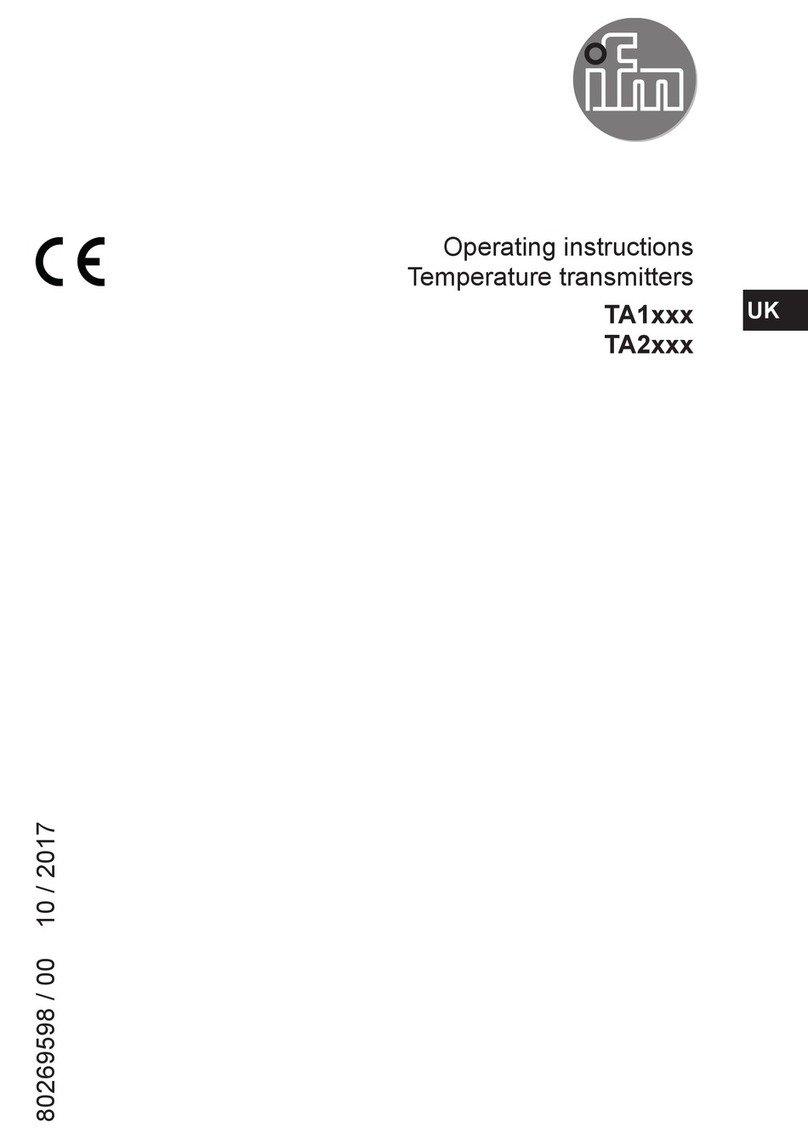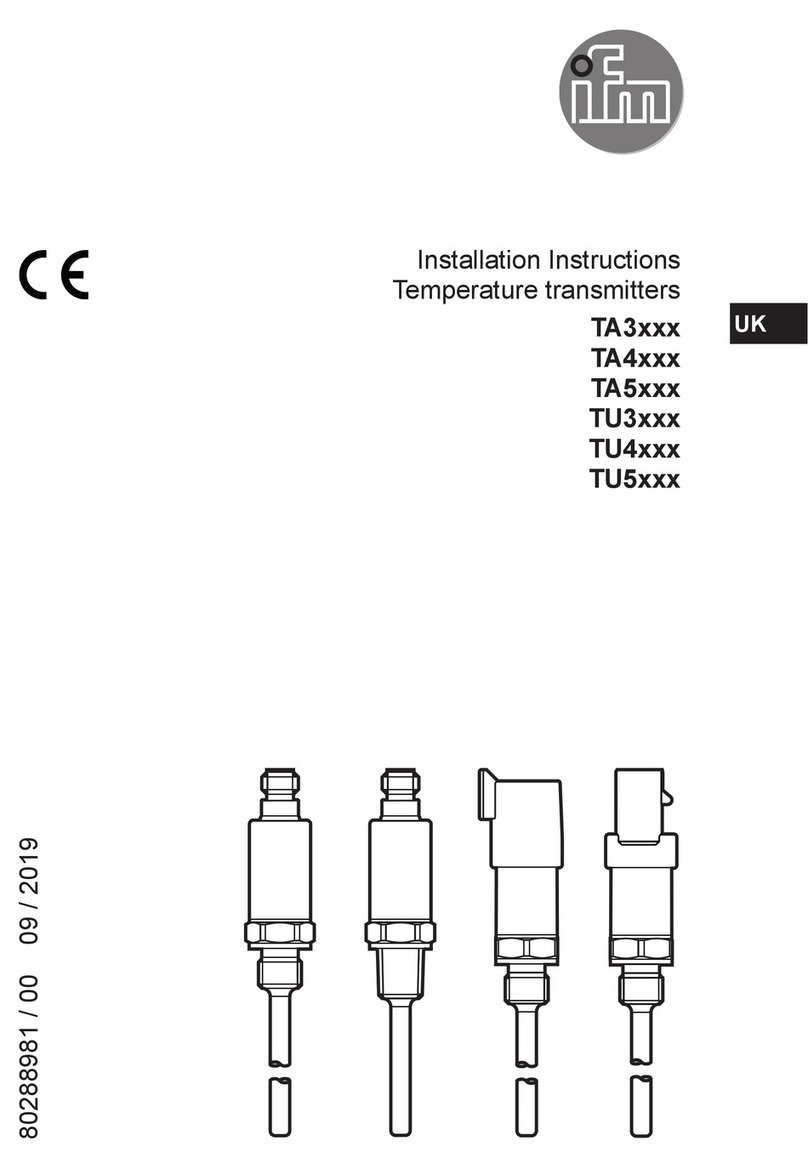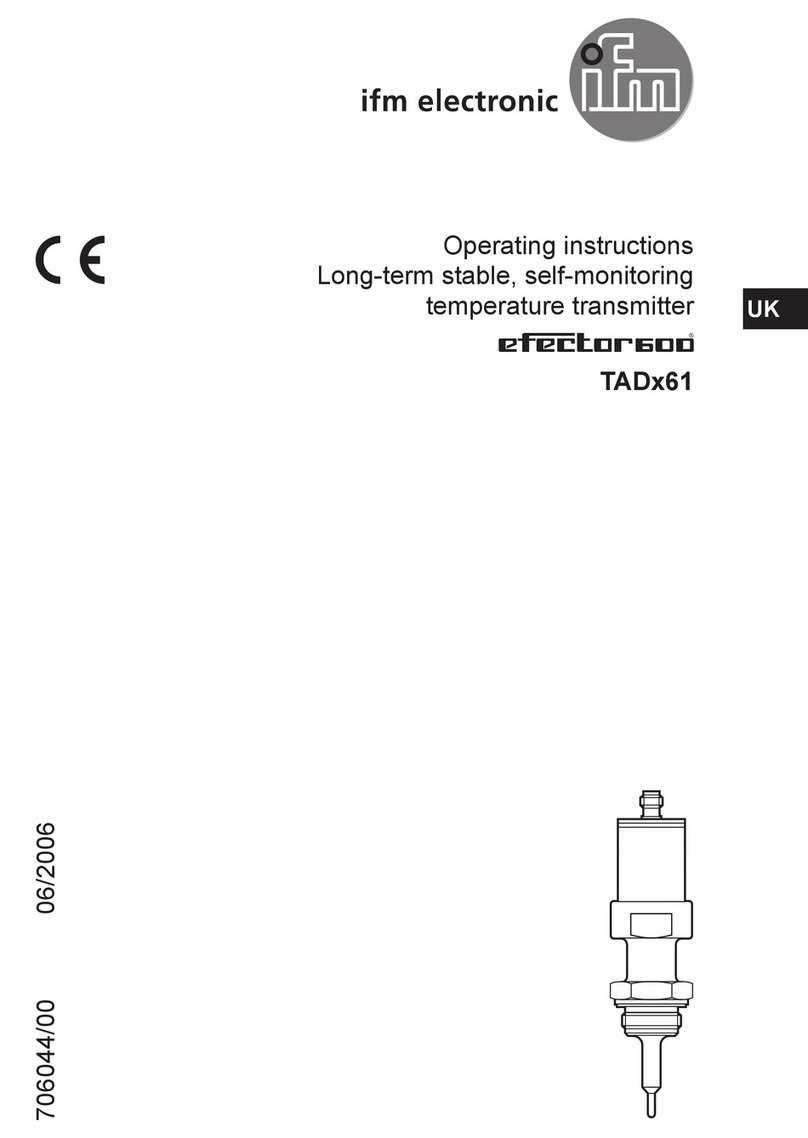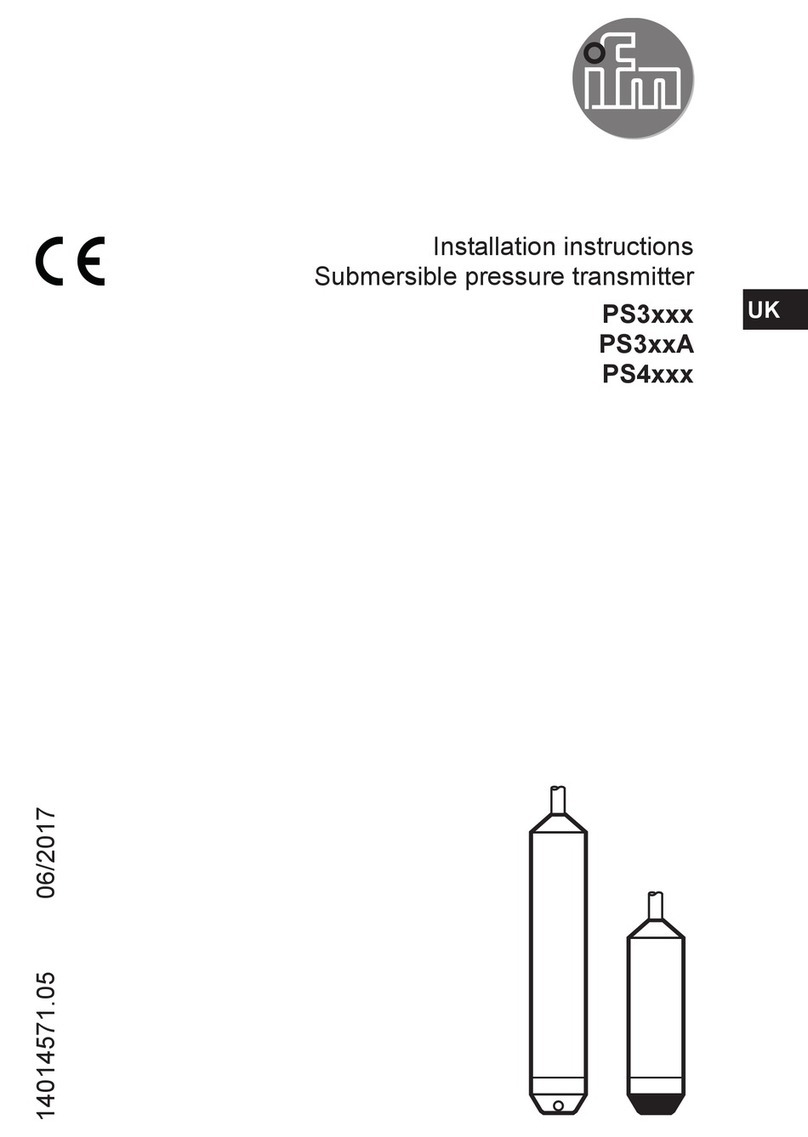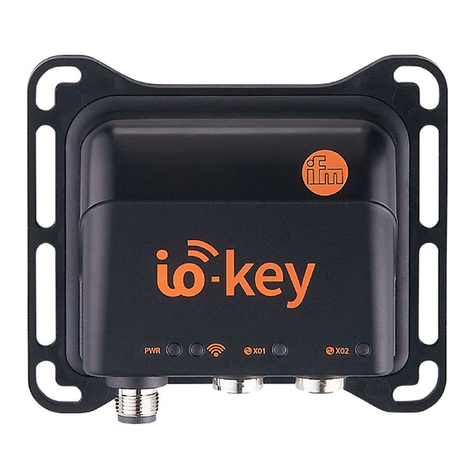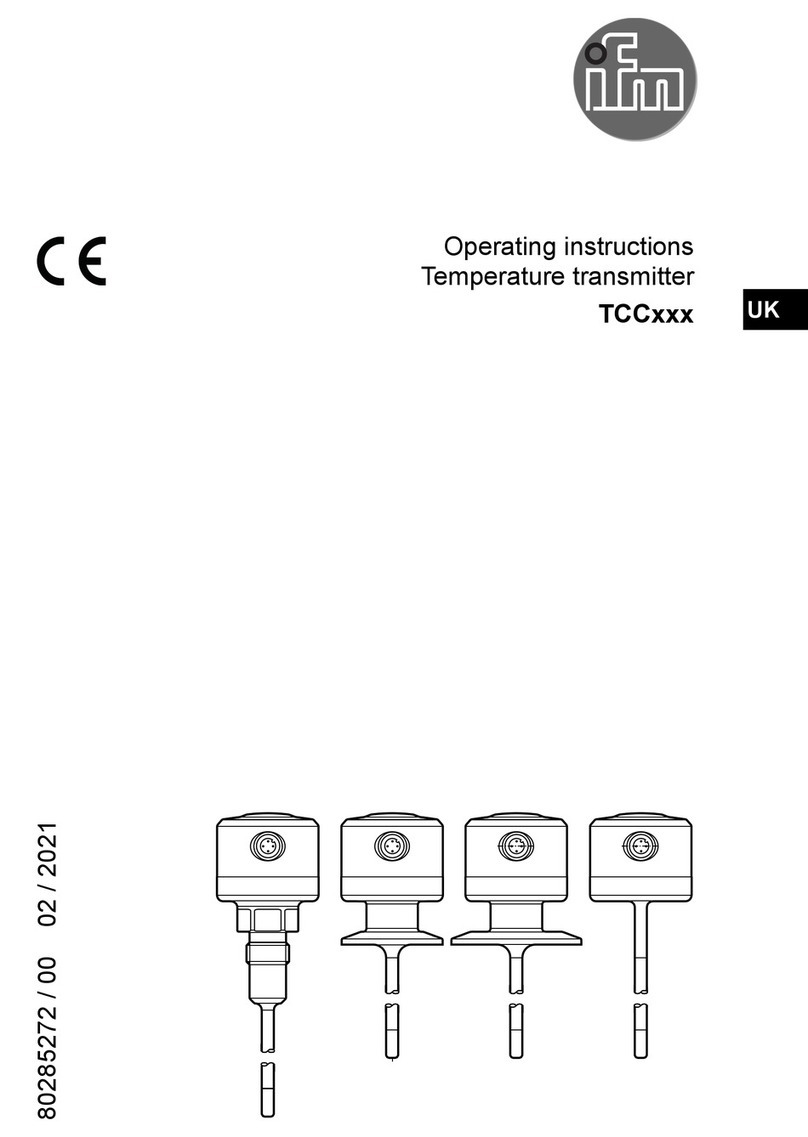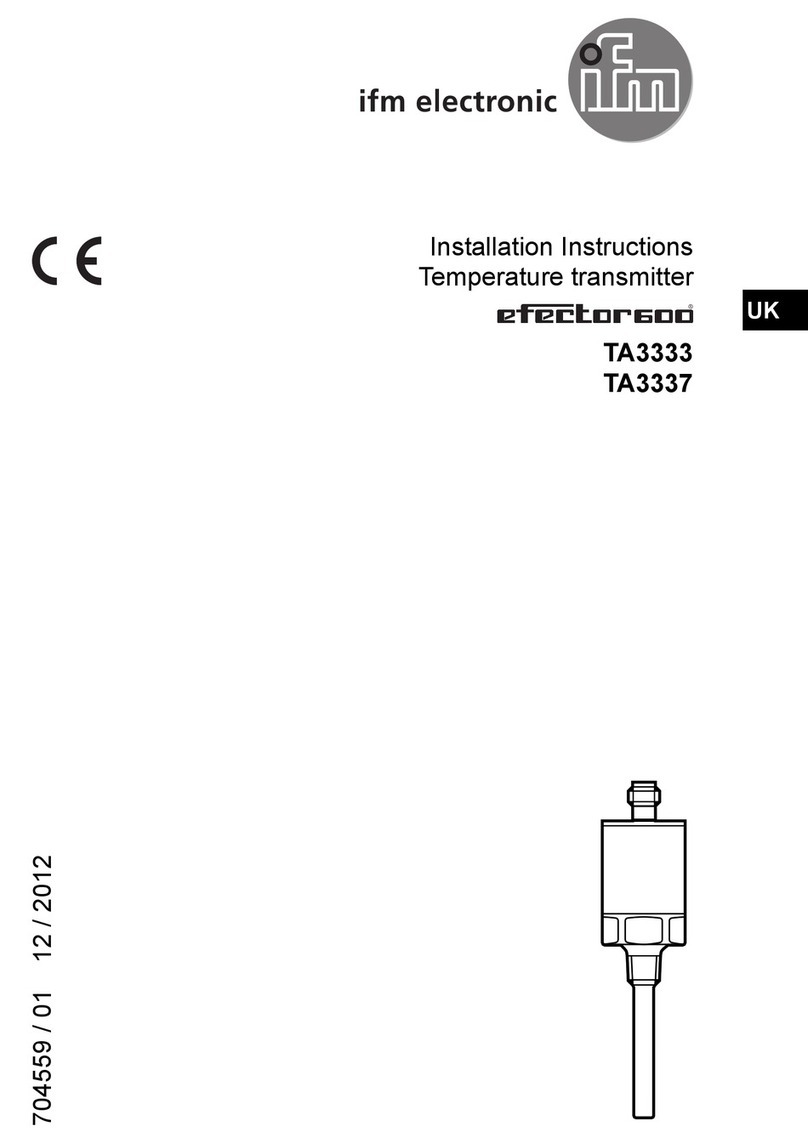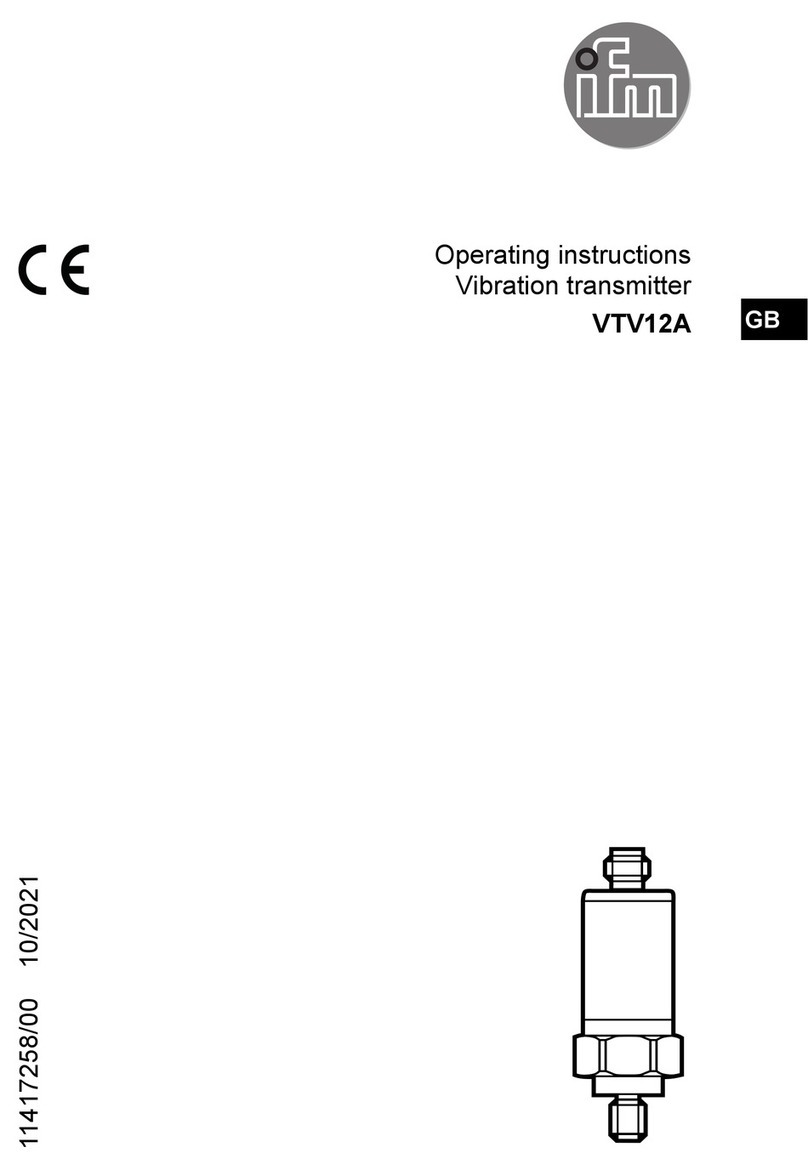
2
Contents
1 Preliminary note���������������������������������������������������������������������������������������������������3
1�1 Symbols used ������������������������������������������������������������������������������������������������3
2 Safety instructions �����������������������������������������������������������������������������������������������3
3 Getting started �����������������������������������������������������������������������������������������������������4
4 Functions and features ����������������������������������������������������������������������������������������5
5 Function���������������������������������������������������������������������������������������������������������������5
5�1 IO-Link �����������������������������������������������������������������������������������������������������������6
5�2 Analogue function ������������������������������������������������������������������������������������������6
5�3 Diagnostic function ����������������������������������������������������������������������������������������8
5�3�1 Drift monitoring ������������������������������������������������������������������������������������8
5�3�2 Sensor backup (redundancy switching)������������������������������������������������9
5�3�3 Diagnostic cases ��������������������������������������������������������������������������������10
5�3�4 Diagnostic function in 2-wire operation�����������������������������������������������10
5�3�5 Diagnostic function in 3-wire operation����������������������������������������������� 11
5�3�6 Process data transmission in IO-Link operation ���������������������������������13
6 Installation ���������������������������������������������������������������������������������������������������������14
6�1 Units with G1 / Aseptoflex Vario process connection����������������������������������14
6�1�1 Installation using an adapter with sealing ring (hygiene-compliant) ��14
6�1�2 Installation using a welding adapter with sealing ring (hygiene-
compliant)�����������������������������������������������������������������������������������������������������14
6�1�3 Installation using a process adapter with metal-to-metal seal ������������15
6�1�4 Installation to G 1 flange���������������������������������������������������������������������15
6�2 Units with process connection G ½ sealing cone ����������������������������������������15
6�3 Use in hygienic areas to 3-A������������������������������������������������������������������������15
6�4 Use in hygienic areas to EHEDG ����������������������������������������������������������������16
7 Electrical connection������������������������������������������������������������������������������������������17
8 Parameter setting ����������������������������������������������������������������������������������������������17
8�1 Adjustable parameters���������������������������������������������������������������������������������18
9 Operation�����������������������������������������������������������������������������������������������������������19
10 Technical data��������������������������������������������������������������������������������������������������19
10�1 Setting range for drW / drA������������������������������������������������������������������������19






